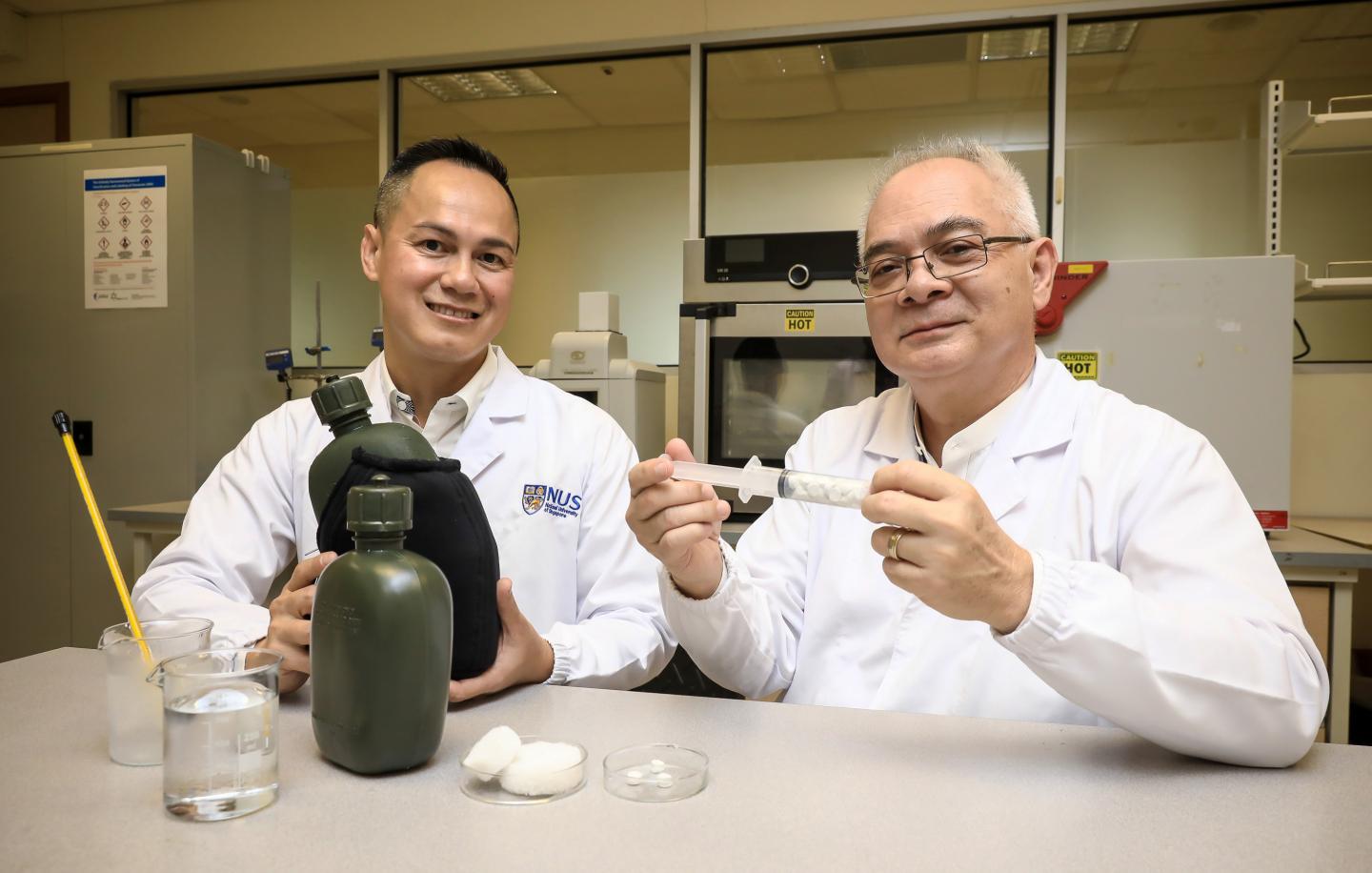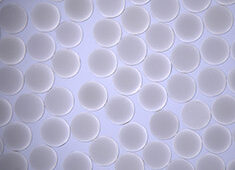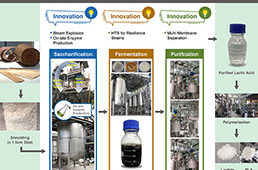
A research team led by Associate Professor Hai Minh Duong (left) and Professor Nhan Phan-Thien from the Department of Mechanical Engineering at National University of Singapore’s Faculty of Engineering has devised a fast, cheap and green method to convert fashion waste into highly compressible and ultralight cotton aerogels. Credit: National University of Singapore
Old clothing may be the key to controlling rapid bleeding or providing much-needed heat insulation for soldiers.
Researchers from the National University of Singapore (NUS) Faculty of Engineering have created a fast, cheap and green method to convert cotton-based fabric waste—including unwanted clothing— into highly compressible and ultralight cotton aerogels, while also demonstrating the application of the material to keep military water bottles cold and to effectively control rapid bleeding.
Aerogels are among the lightest materials in the world and are highly porous with strong absorption capacity and low thermal conductivity, which make them highly suitable for applications oil-spill cleaning, personal care products like diapers and heat, and sound insulation.
However, aerogels come with a high production cost, leading to a push to find new ways to improve the manufacturing and consumption of different types of aerogels.
NUS’s new cotton aerogels can be easily compressed and quickly recover up to 97 percent of their original size when placed in water.
“This new eco-friendly cotton aerogel is a major improvement from the aerogel that our team had previously developed using paper waste,” associate professor Hai Minh Duong said in a statement. “It is highly compressible, hence storage and transportation costs could be greatly reduced.
“Furthermore, these cotton aerogels can be fabricated within eight hours— this is nine times faster than our earlier invention and about 20 times faster than current commercial fabrication processes,” he added. “They are also stronger, making them more suitable for mass production. While we have demonstrated novel application of the cotton aerogels for effective haemorrhage control and heat insulation, we will continue to explore new functions for this advanced material.”
To effectively control rapid bleeding, the researchers developed highly compressible hybrid cotton aerogel pellets, which are more effective than cellulose-based sponges for treatment of deep haemorrhagic wounds.
The pellets are comprised of an optimal mix of cotton and cellulose aerogels coated with chitosan. They are simple, biocompatible and cost-effective to produce and can be easily integrated into a clinical syringe to be used as a haemorrhage control device.
“Each cotton aerogel pellet can expand to 16 times its size in 4.5 seconds – larger and more than three times faster than existing cellulose-based sponges – while retaining their structural integrity,” Duong said. “The unique morphology of the cotton aerogels allows for a larger absorption capacity, while the compressible nature enables the material to expand faster to exert pressure on the wound.”
The researchers also developed a lightweight thermal jacket to maintain the temperature of ice slurry—crushed ice and liquid water—at 0.1 to 1.0 degree Celsius for more than four hours. The jacket, which weighs just 200 grams, consists of a cotton aerogel layer embedded within commonly used fabrics to provide heat insulation.
“The heat insulation property of the novel cotton aerogels can be applied to various consumer products, such as cooler bags to keep food items fresh,” professor Nhan Phan-Thien said in a statement. “We also foresee tremendous potential for other high value applications, such as pipeline insulation and transportation of liquefied natural gas which needs to be stored at a low temperature.”




